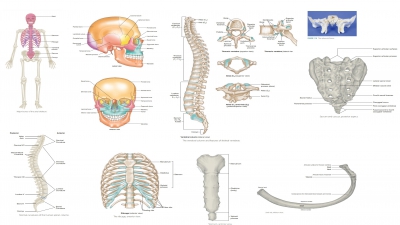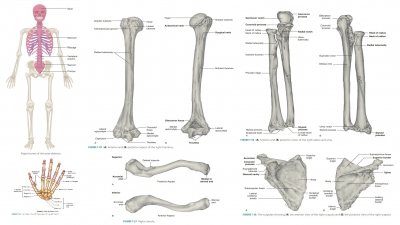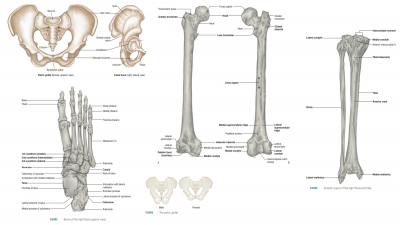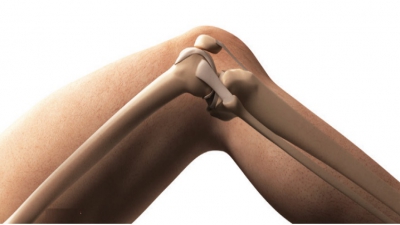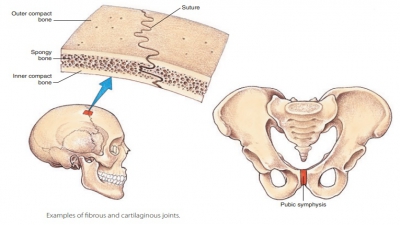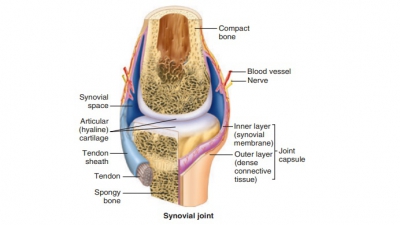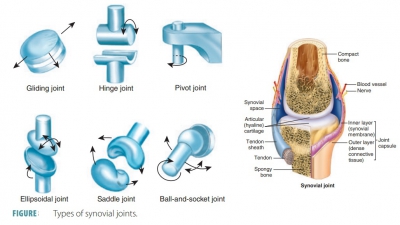Summary
| Home | | Anatomy and Physiology | | Anatomy and Physiology Health Education (APHE) |Chapter: Anatomy and Physiology for Health Professionals: Support and Movement: Bone Tissues and the Skeletal System
The skeleton protects and supports other systems of the body. Bones are classified according to their shapes such as flat, irregular, long, short, and sesamoid (round) .
Summary
The skeleton protects and
supports other systems of the body. Bones are classified according to their
shapes such as flat, irregular, long, short, and sesamoid (round) . Long bones
consist of an epiph-ysis at each end and are covered with articular cartilage
that connects with other bones. The shaft of the bone is called the diaphysis.
The three types of bone cells are osteoblasts, osteocytes, and osteo-clasts
(osteophages). Bone tissue is mostly made up of collagen and inorganic salts
such as calcium phosphate. The primary types of bone are compact and spongy.
Organic components of bone include osteoid and bone cells, while inorganic
components are mineral salts.
Bone repair involves hematoma
formation, for-mation of a fibrocartilaginous callus, formation of a bony
callus, and bone remodeling. Control of bone remodeling is through genetic
factors, a negative feed-back hormonal loop, and responses to gravitational and
mechanical forces. PTH is the primary hormonal controller of bone remodeling.
The skeleton is divided into two
major por-tions: the axial skeleton and the appendicular skel-eton. The major
parts of the axial skeleton include the skull (22 bones), vertebral column (24
movable vertebrae, the sacrum, and the coccyx), and thoracic cage (12 pairs of
ribs, the sternum, and the thoracic vertebrae). All bones of the skull, except
for the tem-poromandibular joints, are joined by immovable sutures. The cranium
contains 8 bones and the face contains 14 bones. In infants, the cranial bones
are connected by fibrous membranes through soft spots called fontanels, which
allow the cranium to slightly change shape. The primary curvatures of the
verte-bral column are the thoracic and sacral curvatures, whereas the secondary
curvatures are the cervical and lumbar. The vertebral column is C-shaped at
birth, with only thoracic and sacral curvatures being present, and reverts back
toward this shape in the elderly. The major parts of the appendicular skele-ton
include the pectoral girdle (one clavicle and one scapula on each side), upper
limbs (30 bones each), pelvic girdle (2 hip bones and the sacrum), and lower
limbs (37 bones each).
Though the skeleton changes
continually through life, the most significant changes occur during childhood.
The earliest significant changes involve the cranium and facial bones. Long
bones continue to grow until late adolescence. In females, the pelvis changes
during puberty to prepare for childbirth. Once an adult reaches full height,
the skeleton remains mostly the same until late middle age. Aging leads to
reductions in height because of changes in the intervertebral discs and osteoporosis.
Inadequate bone ossification is called osteopenia, which affects all adults
eventually.
Related Topics

